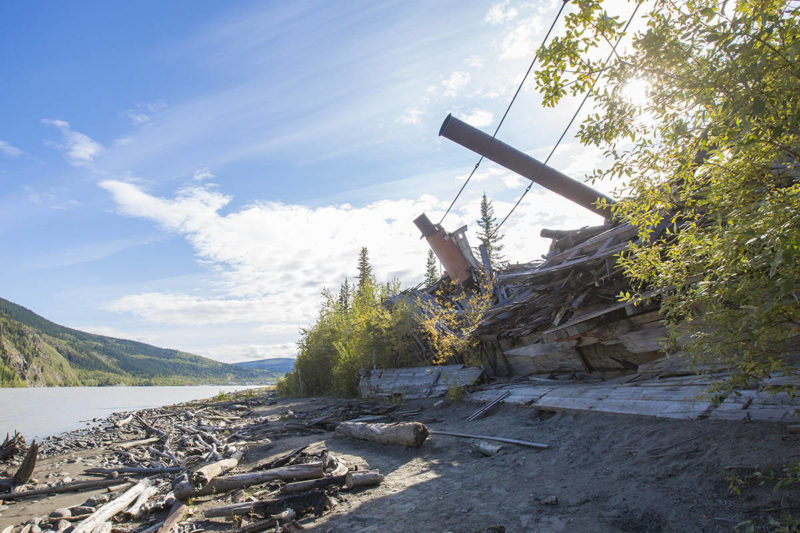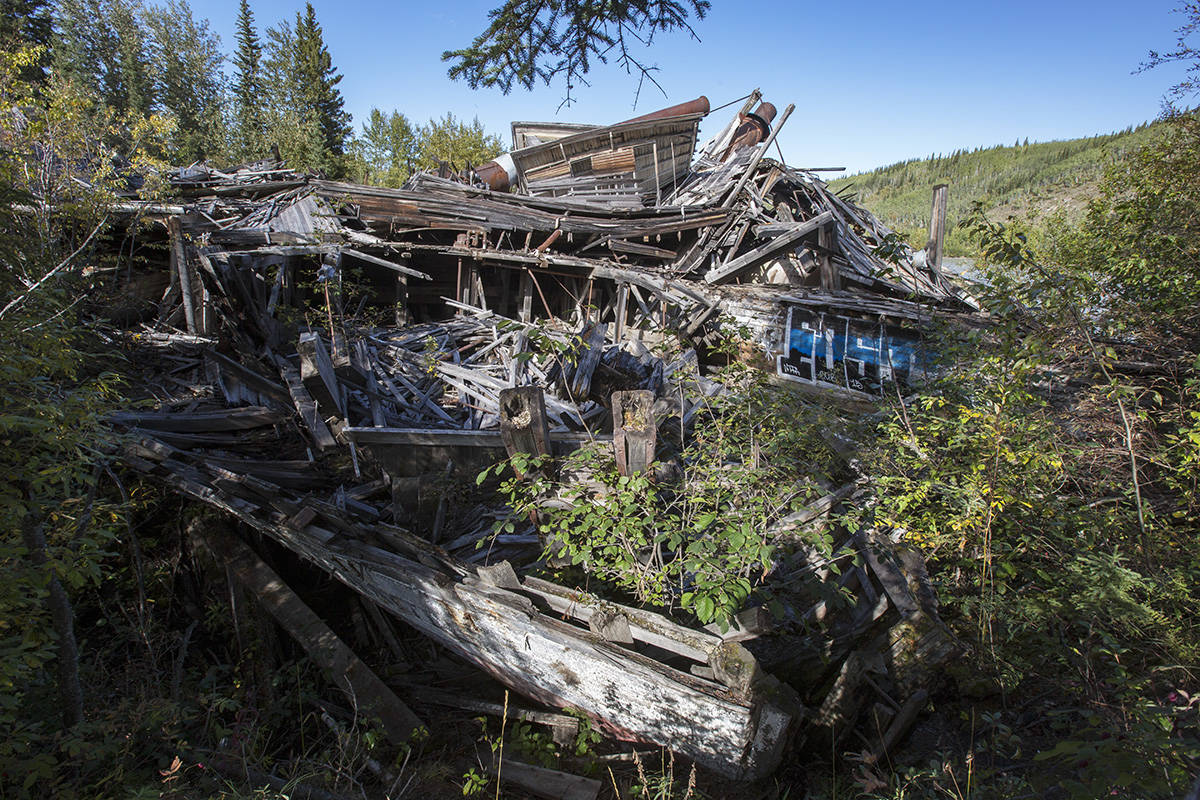A popular unofficial attraction in West Dawson may soon become a little more formal.
The Yukon government’s Department of Tourism and Culture has put forward a proposal to the Yukon Environmental and Socio-economic Assessment Board to build a walkway and install interpretive signs through a portion of the paddlewheel graveyard.
Also known as the sternwheeler graveyard or simply as the shipwrecks, the site, located along the Yukon River near a territorial campground, is home to the largely untouched remnants of seven gold-rush-era steamboats.
According to the board’s proposal submitted earlier this year, the territorial government is hoping to build an elevated wooden walkway that will essentially encircle four of the ships in the southern portion of the graveyard “that will provide a quality visitor experience while protecting what remains of the ships and (artifacts).” Four interpretive signs will also be placed along the walkway.
The three other ships, which lie about 175 metres downstream, sit on Tr’ondëk Hwëch’in settlement land. The proposal says the First Nation was consulted and doesn’t want the plan to extend to its land; no one from Tr’ondëk Hwëch’in was available for comment before press time.
Preparation for walkway — basically, brush clearing — is proposed to take place later this summer or in the early fall, with the actual construction scheduled for around the same time next year.
Preserving a well-loved historic site
Rebecca Jansen, acting historic sites manager for the Department of Tourism and Culture, said that setting up formal infrastructure at the site has been in the works since about 2016, including structural assessments of the wrecks that found that the hulls were still in good shape, despite their decrepit outer appearances.
Dawson residents, she said, have expressed concerns over the years about graffiti appearing on the wrecks, as well as people setting fires nearby and the potential of people getting stuck or hurt while climbing the ruins.
“It’s a well-loved site in Dawson, so we want to take steps to make sure it’s preserved,” Jansen told the News, describing the graveyard as “potentially one of the premier concentrations of historic sternwheelers in North America.”
The site, which she said is visited by roughly 1,500 to 2,000 people a year, offers a “very authentic view of … the boom and bust of the gold rush where there was a huge amount of infrastructure and transportation systems that were developed to serve a large population that then quickly shrank and was then left on the landscape to essentially degrade.”
“It’s not like the S.S. Klondike or anything where it was strategically moved and placed in a park-like setting,” she said.
Klondike Visitors Association’s marketing and events manager Paul Robitaille told the News that talk about building proper infrastructure at the graveyard has been circulating for years, and that the association was pleased it was actually happening.
“It’s another site here in town that’s well-visited … and any time we see government putting money into our infrastructure here in Dawson that’s tourism and culture related, that’s a good thing, I think, for the community,” he said.
Robitaille added that he didn’t think the walkway would take away from the somewhat rugged charm of the graveyard, whose occupants have been allowed to degrade and nature allowed to take over.
“I think from my experience with other heritage projects, they tend to do it in a way that blends well with nature and the site as it is,” he said.
RELATED READING: Test your luck at Dawson City’s Diamond Tooth Gertie’s
Plan your adventures throughout the West Coast at westcoasttraveller.com and be sure to follow us on Facebook and Instagram @thewestcoasttraveller












 20 sensational summer activities in and around Red Deer
20 sensational summer activities in and around Red Deer